Things to do in Grand Cayman
Most of the top-rated tourist attractions of the Cayman Islands can be found on Grand Cayman and many visitors, especially cruise passengers, never feel the need to explore beyond this big, beautiful island. Of course, the beaches are the main attraction, with the famous Seven Mile Beach celebrated as the best in the Caribbean.
Other popular beaches include Smith Cove, West Bay, and Rum Point. Scuba diving and snorkelling are the most popular activities and wonderful dive sites are plentiful around Grand Cayman, with shallow reef dives for beginners and interesting technical dives for the more advanced. Numerous other watersports can be arranged from Grand Cayman, including sailing and fishing trips.
Top attractions on Grand Cayman include Stingray City, where visitors can swim with stingrays; Hell, a tiny settlement on Grand Cayman that takes its quirky name from the jagged black rock formations that surround it; Boatswain's Beach, including the Cayman Turtle Farm; the Butterfly Farm, a tropical garden full of the colourful creatures; Pedro St James Castle, for a bit of history; and, for the culturally inclined, the National Gallery and National Museum in George Town.
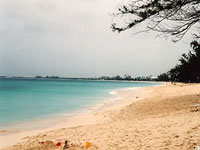
Seven Mile Beach
Just north of George Town, Seven Mile Beach is a beautiful stretch of white sand that curls around the west of Grand Cayman. A bit of a misnomer, Seven Mile Beach is actually only …
Seven Mile Beach
Just north of George Town, Seven Mile Beach is a beautiful stretch of white sand that curls around the west of Grand Cayman. A bit of a misnomer, Seven Mile Beach is actually only five and a half miles (8.8km) long, and is slowly shrinking due to erosion. A reef protects the coast and ensures that the water is blissfully calm and ideal for swimming and snorkelling. This is the most popular beach on the island and is bordered by dozens of hotels, but it is large enough to ensure sunbathers do not end up towel-to-towel. For day-visitors there are plenty of restaurants, beach bars, and even grilling facilities to relax at after a day of watersports.
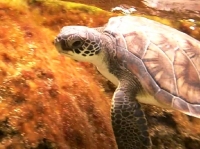
Boatswain's Beach
Boatswain's Beach is Cayman's premier attraction. It features the famous Cayman Turtle Farm, an Education Centre, as well as a one of a kind marine park, with 23 acres of reef lago…
Boatswain's Beach
Boatswain's Beach is Cayman's premier attraction. It features the famous Cayman Turtle Farm, an Education Centre, as well as a one of a kind marine park, with 23 acres of reef lagoon in which guests can snorkel. When Christopher Columbus arrived at the Cayman Islands in 1503, he named them Las Tortugas, meaning 'The Turtles'. According to legend, there were so many turtles that the islands looked like they were covered with rocks. They are now a protected species and the Cayman Islands Turtle Farm is home to thousands of turtles ranging in size from six ounces (170g) to 575 pounds (261kg) each. The priority of the farm is to maintain an ideal breeding environment for the turtles.
Website www.turtle.ky
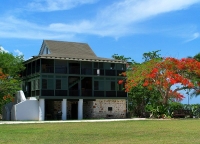
Pedro St James Castle
East of George Town is Pedro St James: the islands' oldest surviving building. Originally built by an Englishman who arrived on Grand Cayman in 1765, local stories also associate t…
Pedro St James Castle
East of George Town is Pedro St James: the islands' oldest surviving building. Originally built by an Englishman who arrived on Grand Cayman in 1765, local stories also associate the house with the pirate Henry Morgan and a 17th-century Spaniard, Pedro Gomez. The house is touted as the islands' 'birthplace of democracy' because it was here in 1831 that the decision was made to vote for elected representatives, and four years later the Slavery Abolition Act was also read here. Constructed around 1780 from quarried native stone, the house has been restored by the government as an historic site.
Website www.pedrostjames.ky
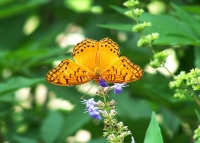
Queen Elizabeth II Botanic Park
The Cayman Islands are better known for their sea life than flora and fauna on land, but for keen botanists or those who would simply like a pleasant walk, the Queen Elizabeth II B…
Queen Elizabeth II Botanic Park
The Cayman Islands are better known for their sea life than flora and fauna on land, but for keen botanists or those who would simply like a pleasant walk, the Queen Elizabeth II Botanic Park is hard to beat. A well-marked mile-long (3km) trail winds through lush and easy terrain, featuring almost 300 native species including roses, hibiscus, lilies, and orchids (which bloom in late May and June). The park and lake is home to the endangered and elusive Blue Iguana, as well as a fascinating array of birdlife including parrots, herons, coots, and the rare West Indian Whistling Duck.
Website www.botanic-park.ky
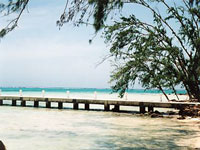
Rum Point
Rum Point Beach consists of hundreds of yards of crystal-clear shallow sand flats that are perfect for snorkeling. The conservation marine park is a tranquil retreat where hammocks…
Rum Point
Rum Point Beach consists of hundreds of yards of crystal-clear shallow sand flats that are perfect for snorkeling. The conservation marine park is a tranquil retreat where hammocks slung under shady trees, picnic tables, a sandy beach, and warm shallow waters provide a relaxing haven for the day. Many watersports are offered, including jet-skiing, sailing, and kayaking, and snorkellers can explore the coral formations just off the beach. The shore is dotted with ultra-casual beach bars, and slipping into a hammock with a cocktail is the perfect way to relax. Rum Point is a good option for families on Grand Cayman, as the shallow waters are calm and safe, and there are plenty of diversions for kids.
Website www.caymanislands.ky/activities/beaches/rumpoint.aspx
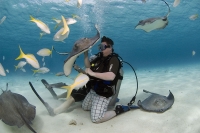
Stingray City and Sandbar
Stingray City and the Sandbar are snorkelling sites located in the North Sound, and are a must-visit for watersports enthusiasts. Friendly stingrays frequent the clear shallow wate…
Stingray City and Sandbar
Stingray City and the Sandbar are snorkelling sites located in the North Sound, and are a must-visit for watersports enthusiasts. Friendly stingrays frequent the clear shallow waters and come to find out what titbits visitors have brought them. Boat tours take snorkellers and divers to swim with and feed the stingrays on bits of squid, and the creatures will brush against swimmers and allow themselves to be touched. Travellers should do their best to ensure, however, that they use only reputable tour operators who have respect for the environment and the animals.
Website www.caymanislands.ky/activities/attractions/stingraycity.aspx
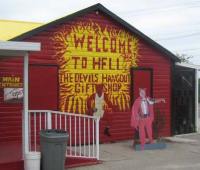
Hell
A popular and slightly bizarre stop on any tour of Grand Cayman, Hell is a tiny village that features strange black limestone rock formations that are said to resemble the Underwor…
Hell
A popular and slightly bizarre stop on any tour of Grand Cayman, Hell is a tiny village that features strange black limestone rock formations that are said to resemble the Underworld. Though Cayman residents are generally religious, residents of Hell show their sense of humour to tourists with a bright red post office that sends 'Postcards from Hell', and a gift shop where 'Satan' passes out souvenirs and inquires of visitors. The village, home to only 60 people, also features a restaurant and bar. The natural rock formations, comprised of the spiky Ironshore limestone found elsewhere on the island are interesting, and the residents have turned Hell into a quirky island attraction for those exploring beyond the beaches and resorts.



